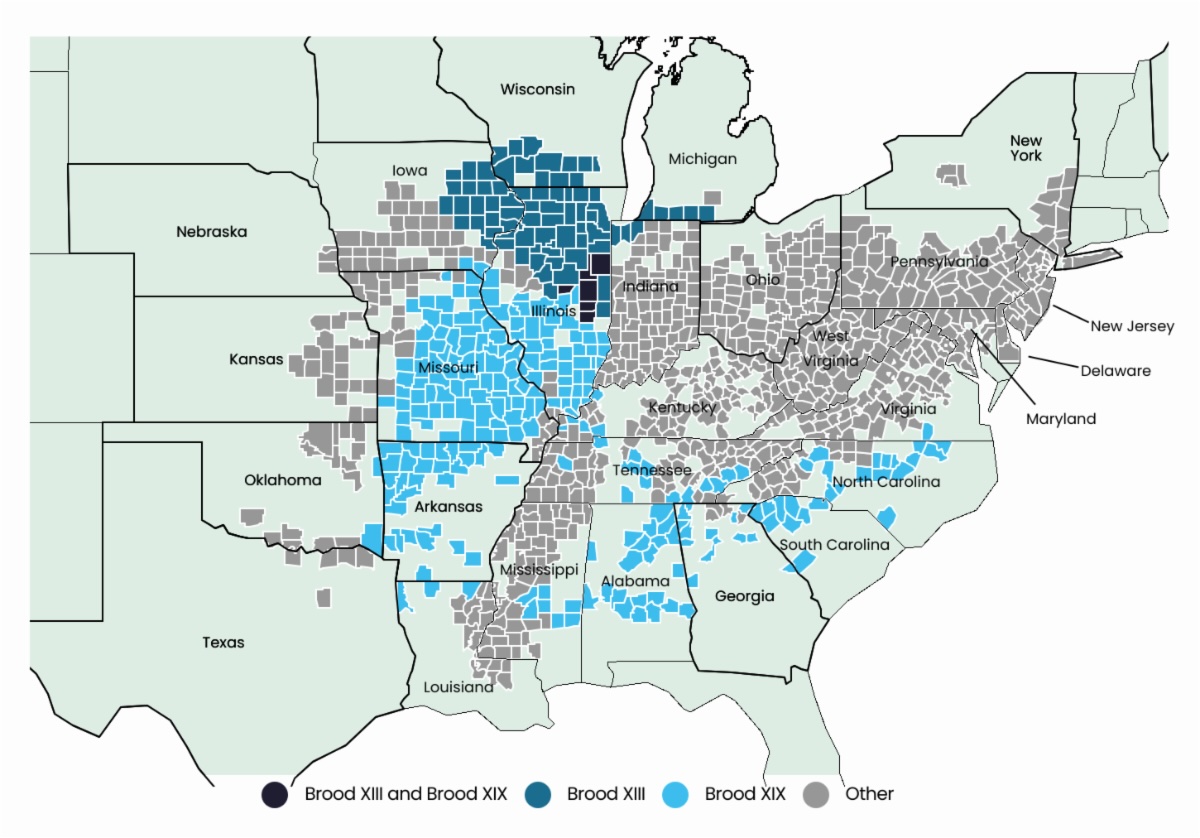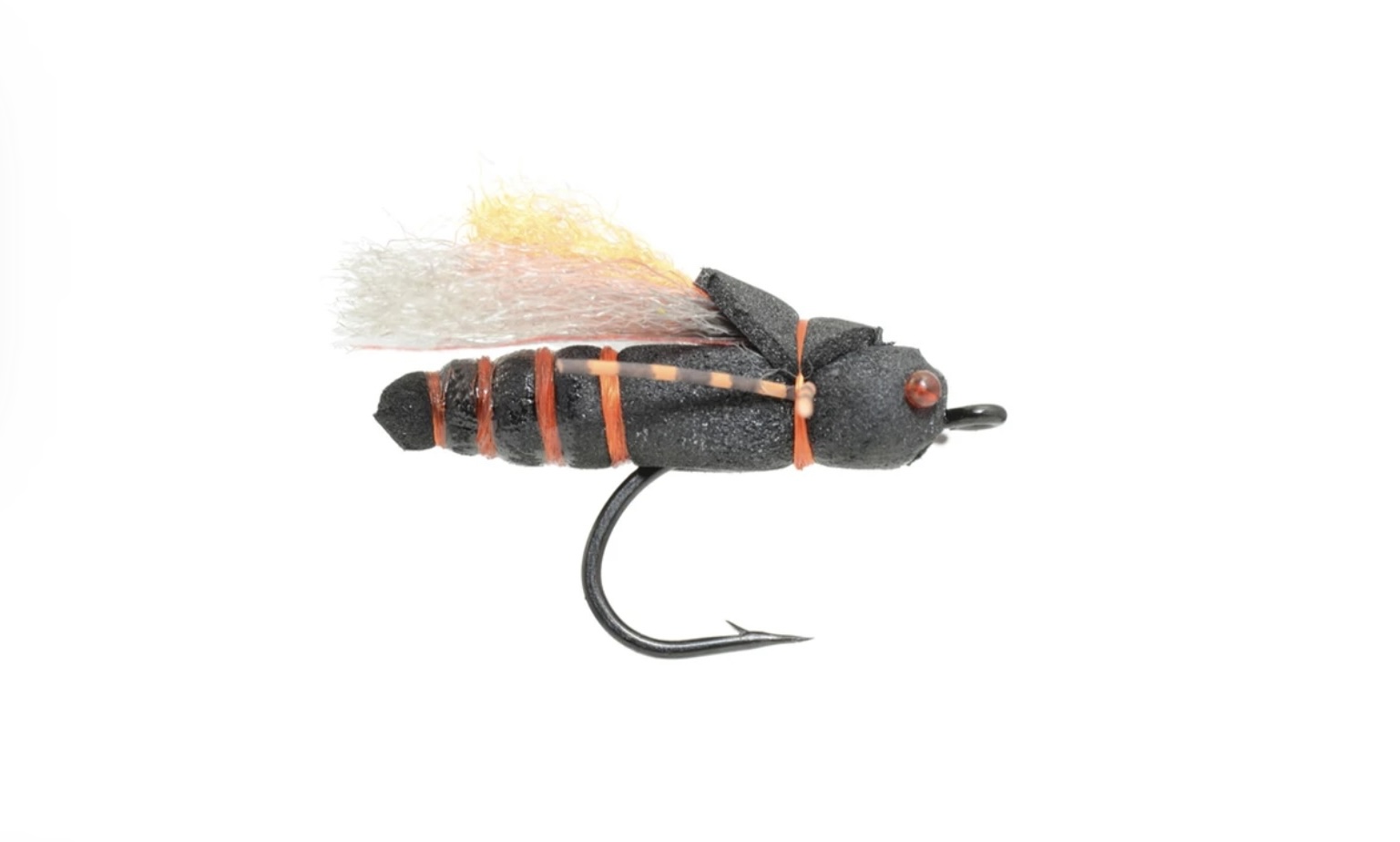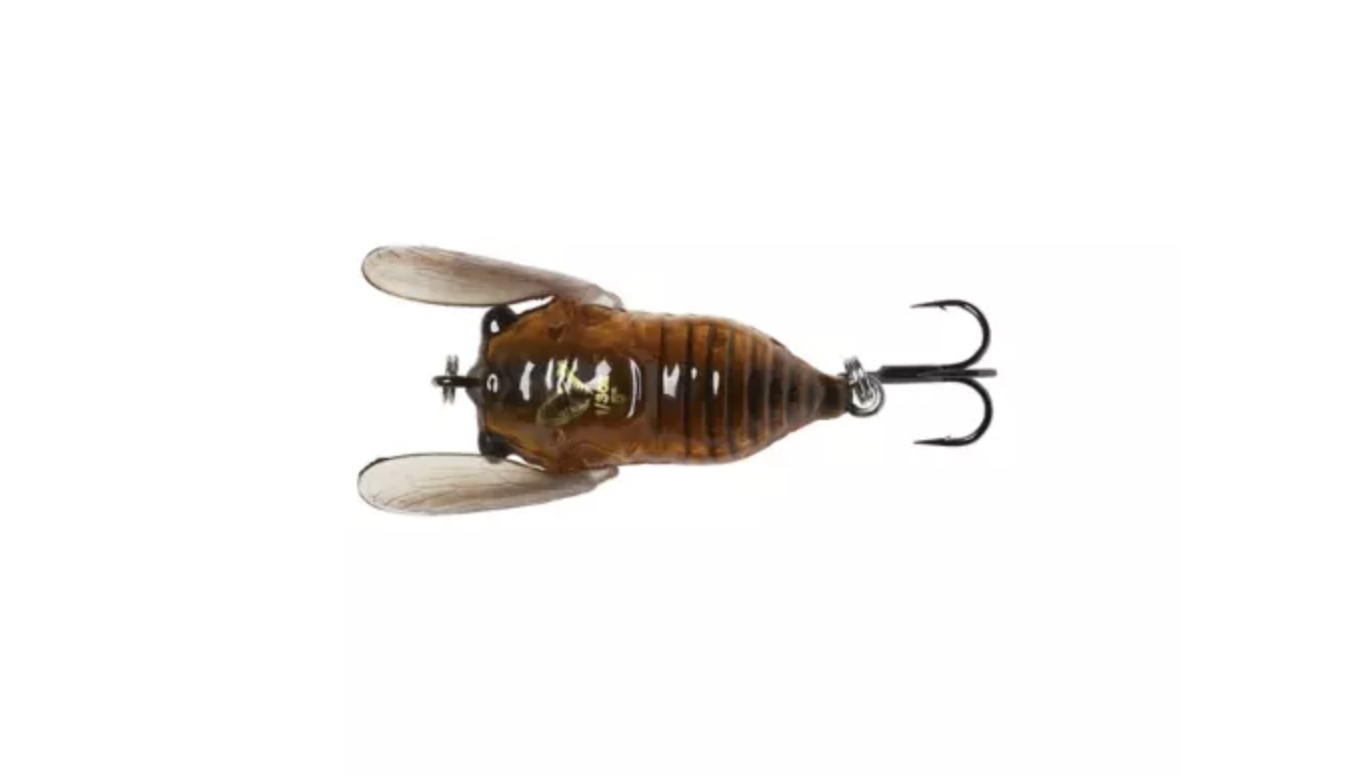
Everyone has seen those movies where a massive swarm of insects descends from the sky and devours a random cornfield, a bunch of gardens, or an errant cow. Of course, these are just movies and things like that never actually happen in real life.
The thing that always seems the most unrealistic about these pestilent scenes to me is that people are always running away from the clouds of insects instead of running towards the bugs with their fishing rods. Every angler knows that a massive insect hatch can create some of the best fishing of the year, and in 2024, anglers can actually expect some of the best fishing in over 200 years with the double emergence of the Brood XIX and Brood XII cicada hatches.

Years of Brooding
Though cicadas emerge nearly every year in one- to 17-year life cycles, 2024 will mark the first time since 1803 that both a 13-year cicada hatch and a 17-year cicada hatch will occur at the same time. Just like with the Brood X hatch of 2021, these bugs will emerge from their subterranean homes all across the Central and Southern US from early May to June, or as soon as the temps below the ground have reached roughly 60 degrees.
Though there will be little overlap between the two broods, the double hatch is expected to be widespread, with bugs showing up as far north as Wisconsin, as far south as Louisiana, and as far east and west as New Jersey and Kansas. The cicadas will number in the trillions, and as they take to the skies and gather in trees and bushes to begin breeding, it’s likely that you’ll be able to hear the insects buzzing mating calls from as far as five miles away from their gathering places. This is great news for both wildlife like birds and rodents, which will be drawn in by the sound to feed on the insects, as well as for anglers since finding cicadas and, subsequently, the fish feeding on them usually starts by following your ears.
“A lot of time, you’re just following their sounds,” said expert angler Andrew Kim, who works as the fishing manager at the Orvis store in Knoxville, Tennessee. “Once that ground hits that optimum temperature and you start getting reports of seeing them hatching, you can hear them buzzing from a distance, and then all you have to do is follow the sound to the water.”
Andrew fished almost every day during the previous Brood X cicada hatch and really figured out how anglers could get on top of the fish.
“To find spots, look at areas where a previous emergence has happened around any rivers, ponds, or lakes and then keep an eye on those spots. Look for birds flying frantically over the water and obviously any big clouds of insects you can see and hear. You’ll really know that you’ve found them when you see the water boiling, as every fish in the place will be feeding on them.”

Fly Fishing with Cicadas
Fly anglers will have an obvious advantage fishing during the cicada hatches as their weighted and floating fly lines allow them to cast weightless flies farther and keep their bugs floating on the water for longer periods of time. Unlike other more typical insects that fly anglers concentrate on, such as stoneflies and mayflies, which only hatch in certain places under specific conditions, cicadas are terrestrial insects that can and will hatch almost anywhere. This means that no matter what sort of waterbody you have nearby—from a small stream to a massive river, lake, or pond—you’ll be able to get in on the hot topwater action created by the cicada hatch.
Though cicadas are big bugs, a conventional 4- or 5-weight fly rod used for trout will be able to cast the large cicada fly patterns just fine. However, there will be more than just trout feeding on cicadas during the hatch. Every species, from tiny panfish and perch to trout, bass, drum, and even striped bass, catfish, and carp, will be hunting the surface of the water for fallen insects. Therefore, a heavier 6-weight or even a 7-weight rod may be more appropriate, especially when fishing in a lake or a big river where larger fish species are known to live. These heavier-weight fly rods can also help you cast large and awkward cicada fly patterns, especially when casting in high winds.
As far as fly patterns are concerned, the bigger the better. Cicadas are large insects with bodies that can measure nearly two inches long. They have a hard black or dark brown shell, six orange or red legs, and four fluttering wings that extend out past their abdomen. When they fall out of a tree or bush or get blown out of the air, they hit the water hard—it’s that impact that fly anglers want to imitate.
“The plop is key,” said fly fishing guide Robert King, who manages the South Houston River Fly Shop in Bristol, Tennessee. “You’ve got to use a fly pattern that makes an impact on the water or it’s not going to work. Flies like Blane’s Cicada are my absolute favorite, but there are a lot of others that will work. Just be sure to choose one that you can really splash down hard on the water. When the fish are really feeding on cicadas, they’re usually going to strike the fly as soon as it hits the water.”
Other patterns that work as cicada imitations for both the Brood XIX and the Brood XII hatch include Rainy’s Cicada and Project Cicada, which are especially realistic patterns and will perform well in low-clear water when fish can become particular. Attractor patterns like the Chubby Chernobyl and stonefly imitations like the Big Sky Salmonfly will also work. No matter which fly you choose though, be sure to smack them down on the water hard and then add in the occasional twitch or flutter as they drift or float to imitate a struggling cicada trying to get airborne.

Conventional Gear for Cicadas
Spin anglers can also get in on the cicada boom, though they may struggle more than fly anglers. This is especially true when the fish are acting particular about what they’re eating or when you’re targeting a picky species like trout. So long as you’re fishing with a medium or light-action rod and fishing in areas with a lot of overhanging tree branches or bushes or in the faster currents of rivers where fish will have less time to look over your lures, there’s no reason you can’t catch a bunch.
There are some realistic cicada lures out there, like the Cicada Crawler and the Bumble Bug, which will definitely work. However, you don’t necessarily have to match the hatch when fishing during a cicada hatch, especially when the fish are fired up and smacking into anything that floats. Topwater lures like the Jitterbug and the Hula Popper will catch a lot of fish during a cicada hatch, especially when species like bass, snakehead, or white bass are up and feeding on the surface. You can also use small floating jerkbaits like the Rapala and twitch them on the surface or even drift on a river current by opening your bail and letting them run downstream.
For an extra edge, you can doctor up your lures to make them look more cicada-like. Try coloring the bellies of lures black and red with a magic marker to imitate a cicada’s colors or tying a section of plastic cut from a Ziplock bag to the middle of your lure to imitate a cicada’s wings. Little additions like this can often cause an otherwise ignored lure to be absolutely smashed by cicada-focused fish.

Bugging Out
There are very few times in fishing when the conditions are absolutely perfect. Though we can always make do, it’s usually too hot or too cold or too early or late in the day or season for any angler to have great fishing all day long. Events like a cicada hatch can change everything.
With millions of bugs on the water and thousands of fish hurling themselves upon them, the Brood XIX and the Brood XII hatches may be a once-in-a-lifetime fishing event that will offer anglers a chance to have not just one but several flawless days on the water. The bugs should provide the kind of epic topwater fishing action that anglers only ever dream about but never actually see—except maybe in the movies.
Cicada map and noise level graphics via Captain Experiences.




Conversation